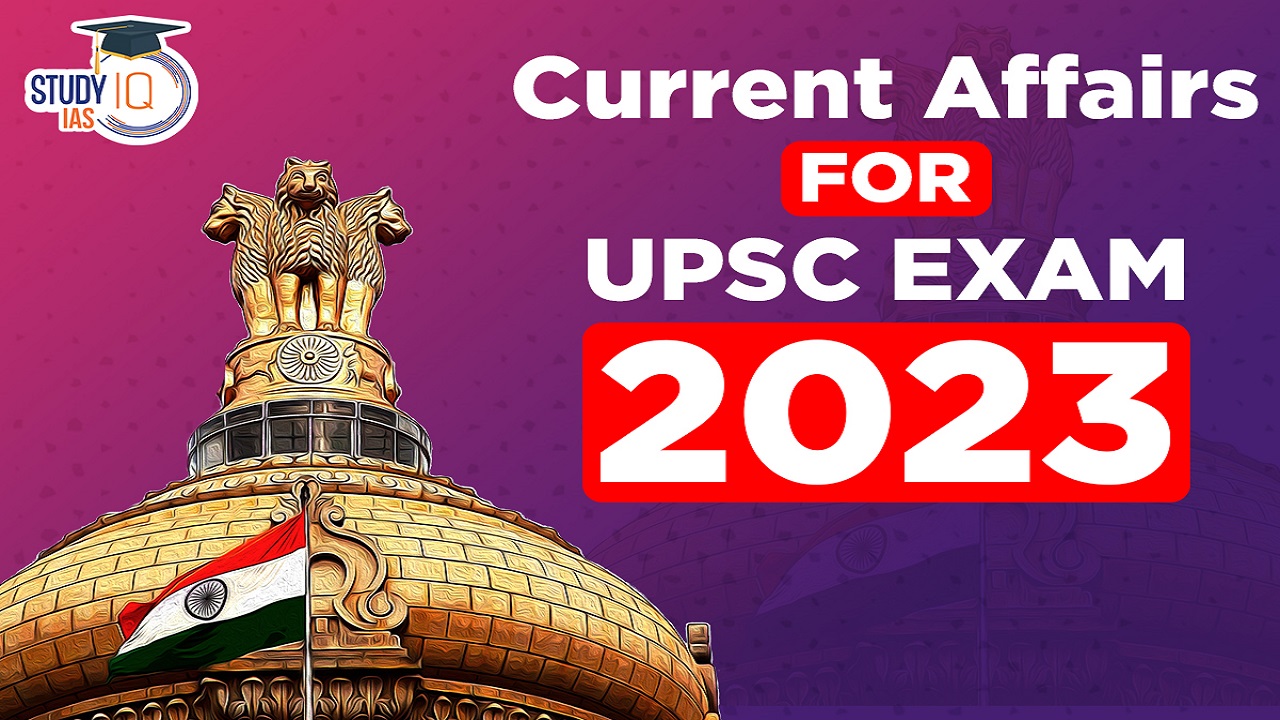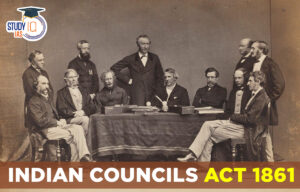Current Affairs 9th August 2023 for UPSC Prelims Exam
Four Characteristics of a Super Conductor
Context: Researchers in South Korea are claiming to have discovered a superconductor named LK-99, world’s first room-temperature superconducting material.
LK-99:
- LK-99 is a room-temperature superconductor formed of lead, phosphorous and oxygen.
- The researchers claim to have proven LK-99’s superconductivity by demonstrating how the material responds when electricity is pushed through it, or when it is exposed to magnetic fields, all without cooling the material or putting it under pressure.
- The material was seen exhibiting some of the common characteristics of superconductors, such as zero resistivity, critical current, and a critical magnetic field.
- The potential room-temperature superconductor LK-99 carries the promise of transforming various industries and medical applications as they can transport heavy currents without any loss.
About Superconductors
- Superconductors: Superconductors are a class of materials that exhibit near-zero electrical resistance.
- Properties of Superconductors: When a material becomes a superconductor, the superconducting state will induce four changes in the material. These are:
- Electronic Effect: The material will transport an electric current with zero resistance. Verifying this property requires advanced equipment and testing on a sufficiently large sample.
- Magnetic Effect: A type I superconductor (a material that, in the right conditions, becomes a superconductor throughout its bulk) will expel a magnetic field from its body as long as the field strength is below a critical value. This is the Meissner effect: a magnet placed near the material will be pushed away as the material transitions to a superconducting state.
- A type II superconductor – which transitions through a mix of superconducting and non-superconducting states for becoming fully superconducting, won’t expel magnetic fields but will prevent them from moving through its bulk. This phenomenon is called flux pinning.
- When a flux-pinned superconductor is taken away from a particular part of the magnetic field and put back in, it will quickly return to its original relative position.
- Thermodynamic Effect: The electronic specific heat changes drastically at the superconducting transition temperature.
- The specific heat is the heat required to increase the temperature of the electrons in the material by 1 degree Celsius.
- As the material transitions to its superconducting state, the electronic specific heat drops.
- Upon warming the material back up to the critical temperature (below which the material is a superconductor), it jumps back to the value it was when the material was not superconducting.
- Spectroscopic Effect: The electrons in the material are forbidden from attaining certain energy levels, even if they could when the material wasn’t a superconductor. When scientists create a map of all possible energy levels in a superconductor, they should see this as a ‘gap’.
- Conventional and Unconventional Superconductors:
- Conventional Superconductors: These materials adhere to the Bardeen-Cooper-Schrieffer theory of superconductivity. They display predictable behaviors explained by established scientific principles.
- Unconventional Superconductors: In contrast, unconventional superconductors exhibit superconductivity that defies current theoretical explanations. Their unique properties challenge researchers to unravel the mysterious origins of their superconducting abilities.
- Room-Temperature Superconductor: A room-temperature, ambient-pressure superconductor can conduct electricity without resistance and without either having to be cooled to almost absolute zero or requiring immense pressure.
Current Affairs 8th August 2023 for UPSC Prelims Exam
BharatNet Initiative
Context: The Cabinet has approved Rs 1.39 lakh cr for last mile BharatNet connectivity.
About BharatNet Initiative
- Definition: Bharat Net is the world’s largest optical fiber-based rural broadband connectivity project.
- It is an ambitious rural internet access programme – an initiative by the Union government under its Digital India.
- It is executed by Bharat Broadband Network Limited (BBNL), a special purpose organisation under the Department of Telecommunications, Ministry of Communications.
- In the Union Budget 2022-23, the Government extended the project deadline to 2025.
- Funds: The total budget allocation for the BharatNet project is Rs. 61,000 crores.
- Funds for the BharatNet project are allocated as a whole and not state/Union Territory-wise.
- Features:
- Using optical fibre, the programme is intended to bring broadband internet connectivity to each of the more than 2.5 lakh gram panchayats across the country.
- The government intends to provide a minimum of 100 Mbps bandwidth at each Gram Panchayat so that everyone, especially those in rural India, can access e-services offered by various Central and State Government agencies.
- This covers services such as e-governance, e-learning, e-banking, e-commerce, and e-health.
- As part of BharatNet project, the Centre will also provide last mile connectivity through Wi-Fi and other means and is setting up Wi-Fi hotspots in all gram panchayats.
- The penetration and proliferation of broadband is also expected to increase direct and indirect employment and income generation.
- Under the project, the home broadband package will start from Rs 399 a month, giving 30 Mbps unlimited data, bundled with OTT offering, etc.
- Implementation Method: BharatNet project is being implemented in a phased manner:
- Phase-I:
- 1,00,000 GPs to be covered – under implementation.
- Being executed by 3 CPSUs viz. BSNL, RailTel and PGCIL.
- Targeted to be completed by March 2017.
- Phase-II:
- Balance GPs using optical mix of underground/aerial OFC, radio and satellite to be used.
- To be executed by 3 CPSUs and State Govts. through their Discoms or any other agency.
- Targeted to be completed by December 2018.
- Phase-III:
- Futuristic network with ring topology to be used between districts and blocks and blocks and GPs.
- Targeted to be completed by 2023.
- Phase-I:
- Success of the Scheme: Around 1.94 lakh villages have been connected at present and rest of the villages are expected to be connected in the next 2.5 years.
- The government is looking at connecting 6,40,000 villages over the next 2.5 years by providing last-mile optical fibre-based connectivity to homes in all the villages of the country.
Central Information Commission (CIC)
Context: The Union Government has invited applications from eligible candidates for the post of Chief Information Commissioner in the Central Information Commission (CIC).
About Central Information Commission
- Definition: Central Information Commission is a statutory body constituted under the Right to Information Act, 2005.
- CIC exercises its jurisdiction over all Central Public Authorities.
- Composition: CIC is headed by the Chief Information Commissioner and can have a maximum 10 Information Commissioners.
- They are appointed by the President on the recommendation of a committee consisting of the Prime Minister as Chairperson, the Leader of Opposition in the Lok Sabha and a Union Cabinet Minister nominated by the Prime Minister.
- Term of Office: The Chief Information Commissioner, or Information Commissioners shall hold office for a period of three years from the date on which he enters upon his office.
- They are not eligible for reappointment.
- Removal: The Chief Information Commissioner or any Information Commissioner shall be removed from his office only by order of the President on the ground of proved misbehaviour or incapacity.
- In such cases, the President has to refer the matter to the Supreme Court for an enquiry.
- After the enquiry, if the Supreme Court upholds the cause of removal and advises so, then the President can remove the CIC.
- Functions of CIC:
- It is a duty of the CIC to inquire the complaints received from any person regarding information requested under RTI Act 2005.
- To receive and decide upon the second appeal from any citizen.
- CIC can impose penalties if it is of opinion that the Public Information Officer, either at the central or state level, has not performed his duty and, without reasonable cause, rejects or refuses to entertain the application made by the complainant.
- During the inquiry, CIC can ask for any records under the control of a public authority.
- CIC can order an inquiry into any matter with reasonable grounds (suo-moto power).
- While inquiring, the Commission has the powers of a civil court in respect of the following matters:
- summoning and enforcing attendance of persons and compelling them to give oral or written evidence on oath and to produce documents or things.
- requiring the discovery and inspection of documents.
- receiving evidence on affidavit
- requisitioning any public record from any court or office.
- any other matter which may be prescribed.
- CIC submits an annual report to the Central Government. The central government places this report before the Parliament.
Pradhan Mantri Fasal Bima Yojana (PMFBY)
Context: As per government data, crop insurance claims worth around Rs 2,761.10 crore under the Pradhan Mantri Fasal Bima Yojana (PMFBY) were pending till 2021-22, with maximum pendency of claims in Rajasthan, Maharashtra and Gujarat.
About Pradhan Mantri Fasal Bima Yojana (PMFBY)
- Definition: Pradhan Mantri Fasal Bima Yojana (PMFBY) is the government sponsored crop insurance scheme that integrates multiple stakeholders on a single platform.
- PMFBY is a replacement scheme of National Agricultural Insurance Scheme (NAIS) and Modified National Agricultural Insurance Scheme (MNAIS), there will be exemption from Service Tax liability of all the services involved in the implementation of the scheme.
- Objective: It aims at supporting sustainable production in agriculture sector by way of:
- Providing financial support to farmers suffering crop loss/damage arising out of unforeseen events.
- Stabilizing the income of farmers to ensure their continuance in farming.
- Encouraging farmers to adopt innovative and modern agricultural practices.
- Ensuring flow of credit to the agriculture sector, which will contribute to food security, crop diversification and enhancing growth and competitiveness of agriculture sector besides protecting farmers from production risks.
- Implementing Authority: Ministry of Agriculture & Farmers Welfare
- Coverage of Crops:
- Food crops (Cereals, Millets and Pulses),
- Oilseeds,
- Annual Commercial / Annual Horticultural crops
- Eligibility: All farmers including sharecroppers and tenant farmers growing the notified crops in the notified areas are eligible for coverage.
- Premium: Farmers including small farmers have to pay maximum 2% for Kharif, 1.5% for Rabi food and oilseed crops and 5% for commercial/horticultural crops.
- The premium rates to be paid by farmers are very low and the balance premium will be paid by the Government to provide full insured amount to the farmers against crop loss on account of natural calamities.
- The balance of premium is shared by the Central and State Government on 50 : 50 basis.
- Risks Covered & Exclusions:
- Basic Cover: Risk of sowing, planting and germination failure, Risk of standing crop failure, Risk of post-harvest losses, Protection against calamities.
- Exclusions: Loss or damage to notified insured crops due to war, nuclear risks, malicious damage and other preventable risks is excluded from the scope of coverage.
- Features:
- The use of technology will be encouraged to a great extent.
- Smart phones will be used to capture and upload data of crop cutting to reduce the delays in claim payment to farmers.
- Remote sensing will be used to reduce the number of crop cutting experiments.
- Crop Insurance Week/Fasal Bima Saptah campaign has been initiated by the Ministry of Agriculture and Farmers Welfare to increase the awareness about benefits of the scheme, sensitize the stakeholders and to increase overall enrolment of farmers.
- Fasal Bima Pathshalas are also being organized at village/GP level for knowledge building of farmers on various aspects of scheme implementation.
- Government had also organized a nationwide Doorstep Crop Insurance Policy/receipt Distribution mega drive – ‘Meri Policy Mere Haath’.
- Hard copies of crop insurance policy receipts are distributed to farmers enrolled under PMFBY through special camps at gram Panchayat/village level.
- Recently introduced Weather Information and Network Data Systems (WINDS), Yield Estimation System based on Technology (YES-Tech), Collection of Real Time Observations and Photographs of Crops (CROPIC) are some of the key steps taken under the scheme to bring in more efficiency and transparency.


 World Heritage Day 2025, Theme, Objectiv...
World Heritage Day 2025, Theme, Objectiv...
 Indian Councils Act 1861, History, Provi...
Indian Councils Act 1861, History, Provi...
 Daily Quiz 17 April 2025
Daily Quiz 17 April 2025





















